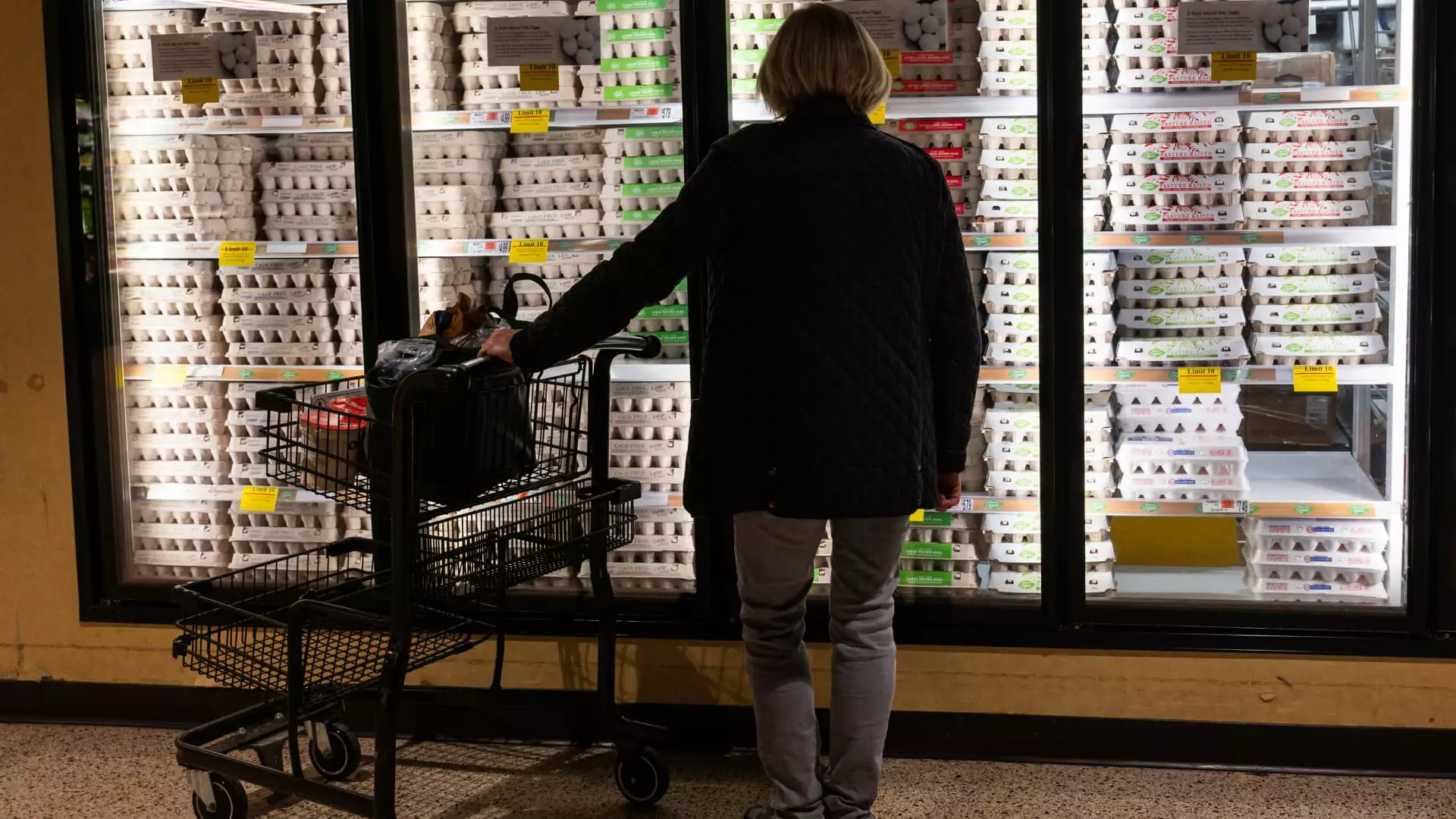In recent weeks, the fluctuating prices of eggs have become a topic of heated conversation. While wholesale egg prices have dramatically plummeted to $4.83 per dozen—down 44% from the staggering $8.58 reached in late February—consumers still find themselves in a perplexing situation. The uncertainty surrounding retail prices creates a fog of confusion, leaving many shoppers despondent instead of relieved. The expectation that price drops will directly translate into savings at the checkout line is, unfortunately, a flawed assumption shaped by previous market dynamics.
As detailed by analysts at Expana, wholesale prices appear to be falling thanks to a mix of conditions, including a respite from widespread bird flu outbreaks and dwindling consumer demand—a situation far from stable. This seems to suggest that while the supply chain is experiencing a momentary reprieve, it remains vulnerable to sudden shocks. For many, this ongoing volatility breeds a growing distrust in the food supply system, especially since consumers not only have to grapple with fluctuating prices but must also navigate the murky waters of public trust in agricultural policies and competitions.
The Aftermath of Bird Flu
The troubling rise in egg prices is rooted, in part, in the devastation caused by the avian flu that ravaged millions of egg-laying hens across the U.S. Although prices surged earlier this year due to supply constraints brought on by this tragedy, the faltering outbreaks in March offer a glimmer of hope—but is this hope misguided? While we may see a temporary spike in supply and a subsequent decrease in wholesale prices, the pattern of price recovery isn’t as straightforward as one might hope. The reliance on increasing supply in the face of a recovering poultry population may be just as precarious, especially if unforeseen factors, such as regulatory hurdles or resurgent disease outbreaks, return to disrupt the market.
It’s not just about supply; these circumstances highlight the profound vulnerabilities of our food system. Increasingly, consumers require more transparency and accountability from the companies that stock our grocery shelves. While the USDA has opened investigations into potential price manipulation by producers, the likelihood of consumers benefiting from remedial actions remains unclear. Hence, the aftermath of bird flu presents a two-edged sword—the prospect of improved availability in the short term risks giving way to long-term instability.
Panic Buying and Psychological Pricing
Compounding the complexities of this issue is the wave of consumer behavior shaped by experiences during the COVID-19 pandemic. Panic buying has set an alarming precedent within the broader context of egg purchases. Households, having already hoarded eggs amid fears of rising prices, find themselves in a peculiar position—buying less as supply momentarily stabilizes. This reluctance to restock creates an odd catch-22; the cycle of purchasing behavior is directly tied to perceptions shaped by prior scarcity rather than current conditions.
Experts suggest that this consumer psychology will only fuel further volatility as we approach Easter, where demand traditionally surges. As families look to fill baskets with eggs for holiday festivities, the strain of dynamics between consumer wisdom and market pressures is only magnified. It raises a crucial question: Are retailers prepared to respond to increasing demand without reverting to exploitative pricing practices?
The Weight of Consumer Sentiment
The reality is that consumers feel the impact of inflation on their wallets long before any adjustments in wholesale prices trickle down to stores. The lag in price decreases, typically lasting two to three weeks, means shoppers are still facing peak prices when they enter grocery aisles. While analysts like Karyn Rispoli express optimism for a drop in prices, the inevitability of retail markups leaves consumers with little better than a faint hope.
In an era where instant information is readily available, the apparent disconnect between wholesale and retail pricing creates a breeding ground for skepticism. Consumers should not just accept prices as they are presented but advocate for accountability and fair practices among retailers and producers alike. The unique landscape following a pandemic and the trauma of price spikes places an urgent need for continued dialogue around fairness and transparency in pricing.
As conversations unfold around these issues, it’s clear that the future of egg prices is murky at best, with multiple factors combining to dictate market behavior. Whether consumers will stay resilient in their purchasing behavior or buckle under pressure remains to be seen, but one thing is certain: the ongoing saga of egg prices demands our attention and scrutiny.

